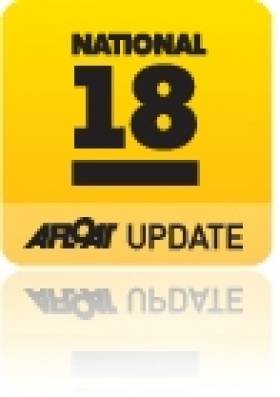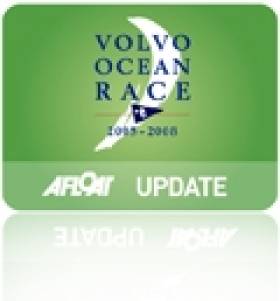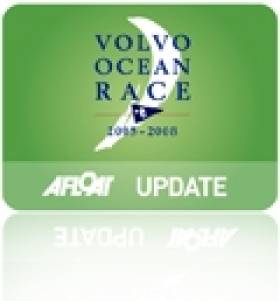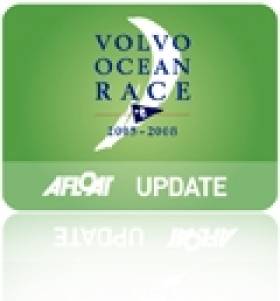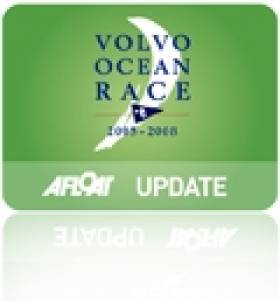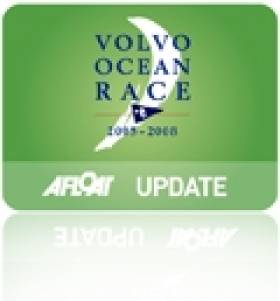Displaying items by tag: New Design
Production Begins On New Design National 18 After Class Approval
#National18 - The National 18 Class Association has selected White Formula in Essex as its exclusive build partner for production of the new design National 18.
Over the summer, the class voted overwhelmingly to approve the 2013 design by Phil Morrison, a prototype of which took to the water in the Royal Cork Autumn League a year ago.
Construction of the first 12 ordered boats is now under way, with a view to finishing the class moulds by the end of this year to see the first vessels launching in time for the 2015 season.
The National 18 class website has much more on the story HERE.
Frenchman's Plan For 'Starship Enterprise Of The Seas'
#NewDesign - The Verge has some beautiful artists' renderings of a proposal for an amazing ocean laboratory that's been dubbed 'the Starship Enterprise of sea exploration'.
The brainchild of architect and oceanographer Jacques Rougerie, the SeaOrbiter is the culmination of 30 years of research into undersea habitats and, if realised, would employ the latest in solar and wind power technologies to sustain itself in the ocean with minimum impact on the environment.
Rougerie hopes to have a prototype craft ready to launch by the end of 2016, provided he can raise the $46 million required for the project.
The Verge has much more on the story HERE.
#VOR - In the latest video updates from the Volvo Ocean Race, we follow the first completed hull and deck of the new design VOR 65 on an epic journey across Europe for assembly in the UK.
Following the March report, it was a race against time to transport these key components from Persico in Italy, via Multiplast in France, to Green Marine in Southampton.
The schedule was tight enough as it was without a sudden blast of wintry weather across the continent to contend with.
See more of the VOR video series Building The Future below:
Rob Doyle Launches New Design Company
#Trade - Kinsale-based yacht designer Rob Doyle has announced the 'takeover' of the staff and offices of Ron Holland Design.
According to Superyacht Times, the 42-year-old issued a statement on Wednesday (27 March) outlining the changeover to his new yacht design, naval architecture and engineering business Rob Doyle Design, which is expected to take the previous company's work in a new direction with new design and refit projects.
"To have had the opportunity to work with Ron Holland over the past 18 years has been both a rare privilege and an eye opener as to what is possible," said Doyle.
"The experience I have gained and the lessons I have learnt make me want to explore more paths and develop further exciting projects with my team and build on Ron’s yacht design legacy."
Ron Holland, meanwhile, is still very much in the game - concentrating on his new centre of activity in Vancouver, where his company opened an office two years ago.
The mentor commented: "I look forward to continuing to collaborate with Rob on the projects that will carry the Ron Holland label and I also wish him all the best for the future of his own design firm and its projects."
Doyle has worked on a number of memorable projects under the Ron Holland brand, including the world's largest sloop Mirabella V and Ethereal, considered the most technically advanced superyacht yet developed.
Superyacht Times has more on the story HERE.
VOR Update: Sanya Back On Route, Assembly Time For VOR 65
#VOR - The Chinese port of Sanya is the latest addition to the route for the next Volvo Ocean Race.
The sunny city in southern China - and the "best kept secret in sailing" according to Volvo Ocean Race CEO Knut Frostad - returns to the race with previously announced addition Lisbon after its debut hosting in the 2011-2012 edition,
"We were given an exceptional welcome by Sanya in the last edition, with the stopover providing a unique take on the race, and it's gratifying to know we will be back to build on our legacy," said Frostad.
Sanya also fielded a team backed by Discover Ireland in the last edition of the global yachting challenge - though they dealt with some misfortune only hours into the first leg of the race, suffering very serious hull damage as seen HERE.
Meanwhile, progress on the new design VOR 65 that will be raced in the 2014-15 Volvo Ocean Race made a great leap forward this week as the hull completed at Persico in Italy and the decking built at Multiplast in France made their way to Green Marine in Southampton for assembly.
The video above also includes a sneak peak at a mockup of the completed design that will hopefully take to the water in the coming months.
VOR Roundup: Abu Dhabi Returns, Puma Quits Sailing
#VOR - Abu Dhabi will return to the Volvo Ocean Race in 2014-15 both with a sailing team and a stopover in the UAE capital, it was announced earlier this week.
Once again skippered by Ian Walker, the team is the third confirmed entrant in the 12th edition of the round-the-world yacht race, after the all-woman Team SCA and a team representing the Brazilian state of Pernambuco.
The Abu Dhabi team joined the last edition of the race under the auspices of former commercial director David Hassett, who was previously instrumental in bringing the race to Galway for the first time in 2009, and was one of the team behind Ireland's underdog entry the Green Dragon, which surprised the yachting world by clinching three podium finishes.
Meanwhile, the stopover will be the end point of Leg 2 from Recife in Brazil, making for "one of the longest and most challenging in the 40-year history of this race" according to Volvo Ocean Race CEO Knut Frostad.
"Heading into the Southern Ocean is never easy and this route will test the sailors to the limit," he added. "The finish line in Abu Dhabi will be one of the most eagerly awaited in the race.”
The news comes two weeks after Newport in Rhode Island was announced at the sixth host port of the race - and an understanding that no Irish ports will feature in the final route, according to The Irish Times.
Elsewhere, the VOR website visits the Persico factory in Italy in where the hulls are being completed for the new design VOR 65 in its latest video update - and also takes a look at the construction of the rigs for the new boat at Southern Spars in New Zealand.
In other news, it's emerged that Puma is pulling out of the sailing market, cutting its support for the Oracle team in the America's Cup and permanently dry-docking its Volvo Ocean Race team.
Reuters reports that the decision was made in the face of dwindling profits at the German sportswear brand.
Puma came third in the last edition of the VOR, which has its successful climax in Galway last summer.
Volvo Ocean Race Veteran Hails New One Design
#VOR - SailRacing Magazine recently sat down with Volvo Ocean Race veteran Neil Cox to get his views on the new design VOR 65 that will sail in the next edition of the round-the-world race next year.
A project consultant for the early stages of the build process, Cox - previously a shore manager for the PUMA and CAMPER crews - says the designers started from scratch "with a blank canvas" as opposed to previous designs based on iterations of "the Volvo rule".
He also enthuses about the change to one design racing in the VOR, which "means the greatest speed advantage will come from being able to push the boat harder than anyone else".
SailRacing Magazine has much more on the story HERE.
Meanwhile, TVNZ reports that Auckland in New Zealand has been announced as the latest stopover port for the 2014-15 edition of the global yachting challenge.
Volvo Ocean Race chief Knut Frostad described the race's return to New Zealand in 2015 and again in 2018 as a "no brainer" after last year's visit to the country's largest city on the Southern Ocean leg.
Two stopovers in Brazil were previously unveiled for the next edition of the Volvo Ocean Race, the most recent of which enjoyed a memorable conclusion in Galway last summer.
Lightness, Strength and Rigidity Key to New VOR 65 Design
#VOR - In the latest video update following the construction of the Volvo Ocean Race's new one-design yacht, VOR expert Rick Deppe travels to the Decision plant in Lausanne, Switzerland to take a look at the production of the boat's internal structure.
The new footage shows the 'sandwich' construction of the lightweight internal frame of foam and carbon fibre which will give the yachts the strength and rigidity that will make them both fast and safe on the open sea.
Previously the series visited the USA, Italy and France for an all-round catch-up on the progress of the new VOR 65 design.
Fans of the Volvo Ocean Race should expect a "very forward thinking" design when the finished boat is finally unveiled ahead of the next edition of the round-the-world race.
As reported on Afloat.ie last week, Team SCA have unveiled the livery for their VOR 65 which they intend to launch when ready to race later this year.
Volvo Ocean Race Returns to Brazil for 2014-15
#VOR - Organisers of the Volvo Ocean Race have announced that the Brazilian state of Pernambuco will enter a team in the next edition of the round-the-world offshore challenge in 2014-15.
In addition, its capital city of Recife will be the first stopover port along the race route, which starts in Alicante in the second half of next year.
The Recife team is only the second publicly announced team for the 12th edition of the VOR, following the SCA all-women's team announced last August.
Details about the stopover and the team, including the identity of the skipper, will be announced in the coming weeks.
“[The] announcement of the Pernambuco team and Recife stopover are fantastic news for the race,” said Volvo Ocean Race CEO Knut Frostad. “I’m delighted to see the Race strengthen our ties with Brazil, Recife and Pernambuco in this way.
"Coming to Recife at the end of Leg 1 means there will be a lot of attention on this great city and having a Brazilian team in the race will be fantastic for fans across the country."
The decision to make Leg 1 of the route from Alicante to Recife means the VOR will be visiting Brazil in one of the biggest sporting eras in the nation's history – just a few months after the country hosts the 2014 Fifa World Cup and less than two years before the Olympic Games in Rio.
Recife was one of over 80 ports to express an interest in hosting the race when the bid process was launched in 2012. The deal announced yesterday will see Recife host the race for the next two editions.
The last Brazilian team to enter the Volvo Ocean Race was Brasil 1 in 2005-06. Torben Grael was the skipper and Knut Frostad, now the Volvo Ocean Race's CEO, featured as a crew member on some of the legs. The Brazilian campaign proved to be a big success and generated great interest worldwide and in the media. Grael went on to win the Volvo Ocean Race as skipper of Ericsson 4 in 2008-09.
The Volvo Ocean Race's links with Brazil date back to 1973, when the first edition of what was then known as the Whitbread Round the World Race stopped at Rio de Janeiro.
The race also visited Rio in the second edition in 1977-78 and again in 2001-02, 2005-06 and 2008-09. In 1997-98 the race stopped at São Sebastião and in the last edition in 2011-12, Itajaí was a host port.
Meanwhile, Team SCA have unveiled the livery for their VOR 65 new design when it is launched and ready to race later this year.
As previously reported on Afloat.ie, the new design VOR 65 - priced at €4.5 million, about 20% less expensive than the 70-footer that ended its run in Galway last summer - was developed with the idea of reducing the costs of competing in the gruelling round-the-world yacht race.
The official VOR website has images of the SCA livery, with nature-inspired graphics and colours designed to reflect the eco-friendly values of the title sponsor, global hygiene company SCA.
At the beginning of February, a number of Team SCA women crew candidates will leave Southampton on a first test sail together with several leading off-shore coaches.
Team SCA have not yet revealed the identity of any of the crew, including the skipper.
Following Progress of New Volvo Ocean Race Design
#VOLVO OCEAN RACE - In the latest video update following the construction of the VOR 65, Volvo Ocean Race’s Rick Deppe visits USA, Italy and France for an all-round catch-up on the progress of the new one-design.
In Annapolis, Maryland, Farr Yacht Design president Patrick Shaughnessy explains how the American naval architecture office responsible for the new boat is working on achieving “the world’s best one-design” along with the four boatyards involved in the building.
Meanwhile in Persico, Italy, the hull mould is currently being laminated, while the deck mould is taking shape at French boatyard Multiplast in Vannes.
As previously reported on Afloat.ie, fans of the Volvo Ocean Race should expect a "very forward thinking" design when the finished boat is finally unveiled ahead of the next edition of the round-the-world race.



























